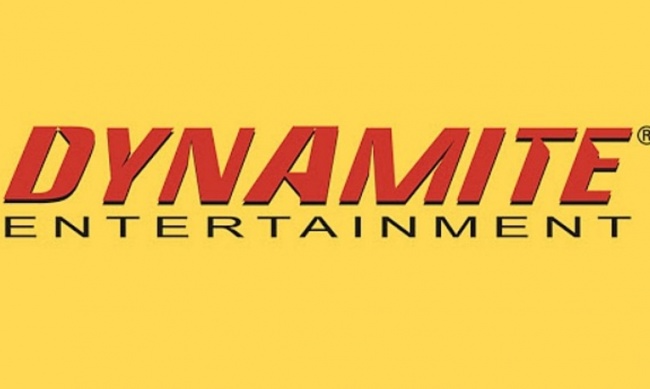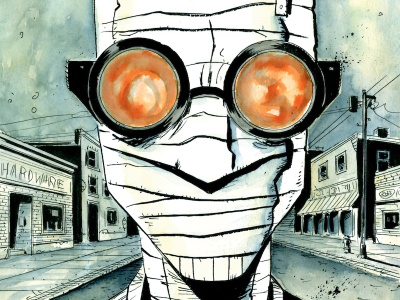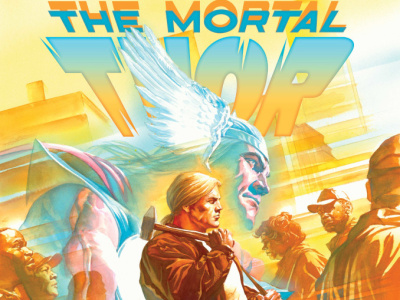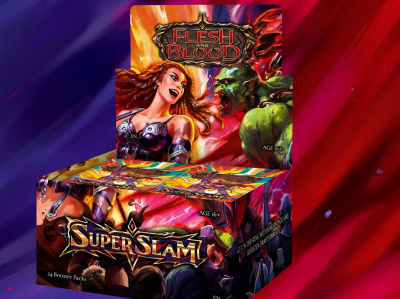At the beginning of 2015, Dynamite Entertainment began a process of cutting back its publishing output substantially with an eye toward rebuilding the company in a different form. A New York office was opened (see “And Then There Were Three (Again)”), new staff was hired, and output has slowly been ramped up again. We caught up with Dynamite CEO Nick Barrucci at New York Comic Con to talk about the results of those changes.
You cut back Dynamite’s production to make way for a better title mix. How do you feel that transition has gone?
Good things come to those who wait; it’s going as well as could be expected. We’re ahead of our projections. We cut back our line because we were bringing on more staff, and we wanted to slow things down to rebuild and create a new foundation. It allowed our existing staff to focus more on fewer books each, to have more voices in the room, and now I feel our books are getting better and better as we go.
You also opened a New York office, in part, to have better relations with talent. How is that going?
That’s going well. The New York office was opened to have better relations with talent, but it was also opened as we were hiring new editors, new sales people, a few people who didn’t move to the West Coast with DC. Those were opportunities that we couldn’t pass up, and the New York office was necessary. So that’s paying off very well.
How many people do you have in that office?
There are six people in that office right now.
Are any of those relocated from New Jersey?
One is a relo from New Jersey. We actually had Chris Caniano who had moved down to New Jersey from New York years ago, but now that we opened the New York office he was able to move back up and be the New Yorker that he is.
We also have people from the New Jersey office that go to the New York office a few times a week because the discussions are better, there’s more interaction, it allows for the work flow to go better.
Is your total number of staff up?
Our staff is up. We’ve ramped up our staff by 30%. One of the things that we’ve been able to do by bringing on more staff, more editors, is that it’s allowed our Senior Editor, Joe Rybandt, to work with our talent like Francesco Francavilla to actually write and draw The Spirit. It’s nice to have an Eisner Award-winning writer-artist working on Will Eisner’s most recognizable creation. But then bringing someone like Matt Idelson on board has allowed us to work with someone like Paul Cornell, someone we may not have had access to.
So that’s really where some of the growth is coming, and that just underscores the fact that by cutting our line back, we were able to bring a talented person like Paul Cornell and have a new direction for Vampirella. It’s what’s allowed us to relaunch with Amy Chu on Red Sonja. It’s what gave us the success on KISS because we were able to focus on KISS. It’s the bestselling KISS comic since Marvel’s KISS launch.
Retailers will be seeing their success in their orders and sell-through.
You strengthened your support of the book channel with the hiring of Alan Payne. Have you been happy with the developments there?
That’s another part of our growth. We’ve hired people in New York who didn’t move out with DC and other people who just were available, but we’ve hired a talented sales person with Alan Payne. We’ve also brought on Jeremy Atkins who was at Dark Horse. So we’ve been growing our company in each department and it’s been going really well.
We’ve got our biggest book of the year, The Art of Atari (see “'Art of Atari' and 'The Best of Vampirella Magazine'”). The first print run is over 75,000 units of a $40 hardcover. We have the deluxe edition that’s $100 MSRP. We’ve sold out of the wave of 2,000 units. We’ve actually had to allocate, and we’re ramping up great books. The slew of announcements we had this week I would say some were years in the making. Barbarella for example, took us four years to actually go from beginning of discussions, to negotiations, to signing the agreement. It’s pretty rewarding being the first American publisher to create new content with Barbarella (see “Dynamite to Publish New 'Barbarella' Comics”). She’s iconic and I don’t think there’s been any new material in the last 30 years; it’s all been reprint.
Humanoids is bringing out a new edition of their older material, so the new material can piggyback on that a little bit.
We’re a publishing company. Comics are our primary product, but when you look at The Art of Atari, the Gumby retrospective that we’re going to do (see “Dynamite Nabs Rights to 'Gumby' Art Book”), the art books that we have, when you combine everything that we’re able to do - the 3-D products, all extensions of the comics brand and pop culture, that’s where you’ll see the real growth for us. There’s a reason that we did Animal Jam (see “'Animal Jam' Online Social Game Comes to Comics”); it’s the most popular kids online game right now - 55 million users. And for us, that’s a great way to create content that will go out to a mass audience and hopefully some of that mass audience will come into comics.
We’ve been seeing some great success with Grumpy Cat. The last sale of Grumpy Cat that Alan made was 140,000 units to Scholastic Book Fairs alone, and that was one sale. And now we have some considerable sales coming in from Scholastic with Boo and also there looks to be a deal with Bob’s Burgers. And again, that’ reaching a new audience and building the Dynamite brand, which is one of our goals, but it’s also bringing people into the comics audience and exposing kids to comics who wouldn’t be exposed to them at all outside of Scholastic fairs.








